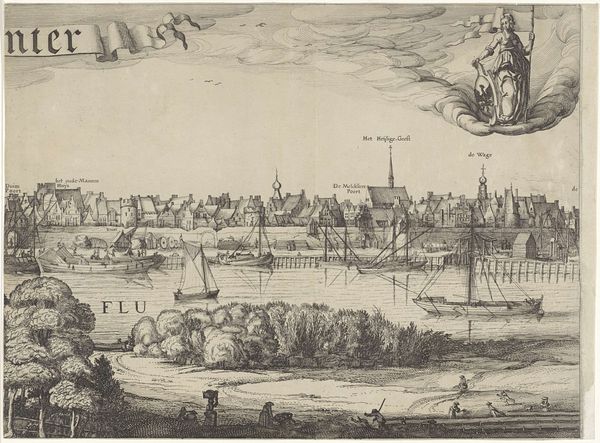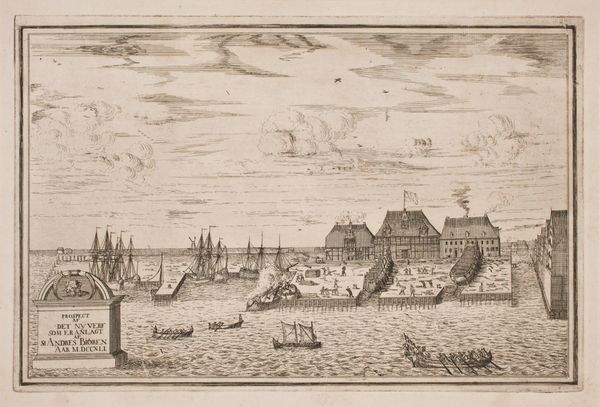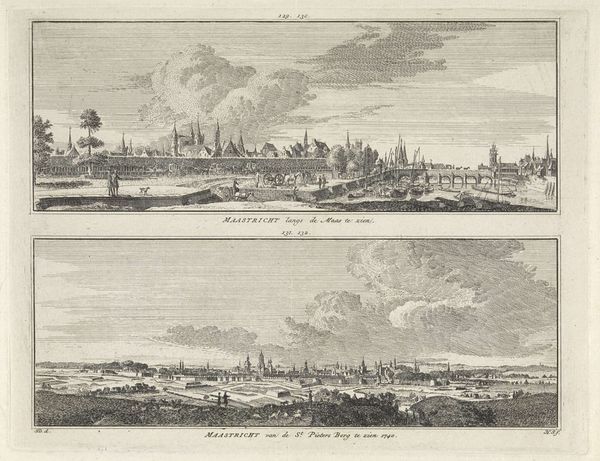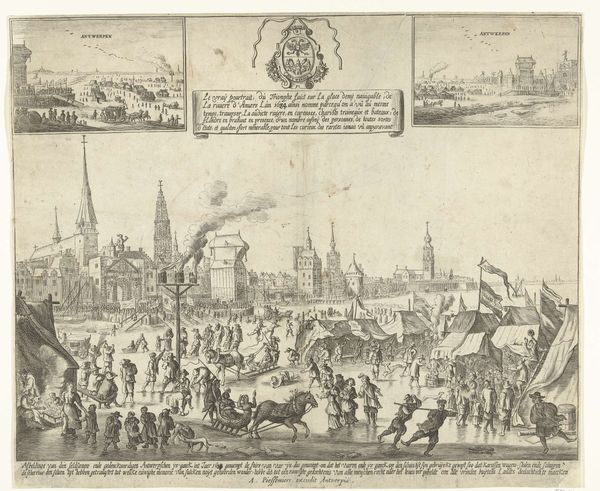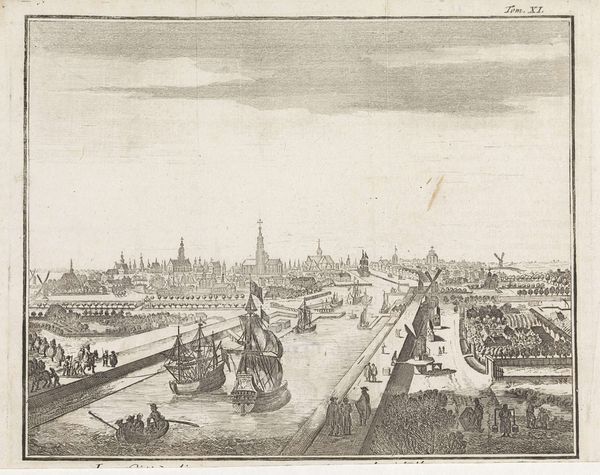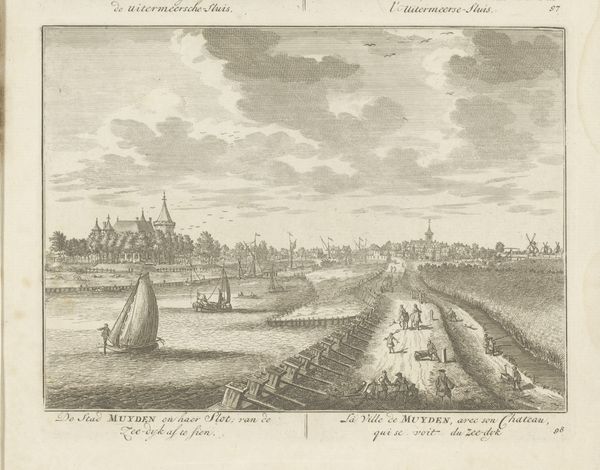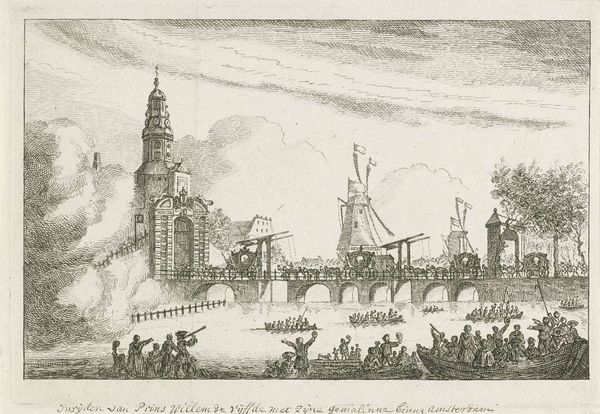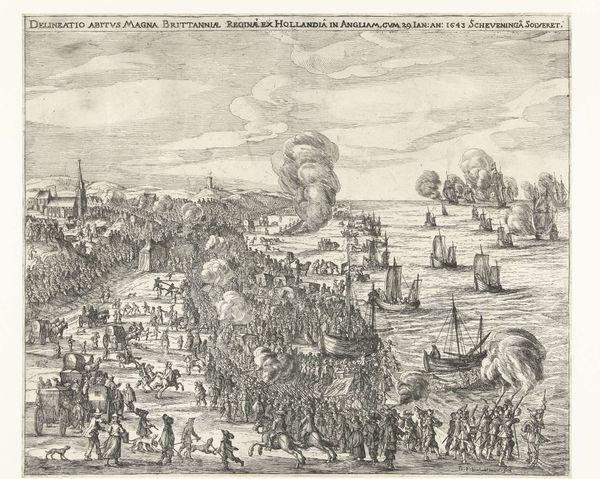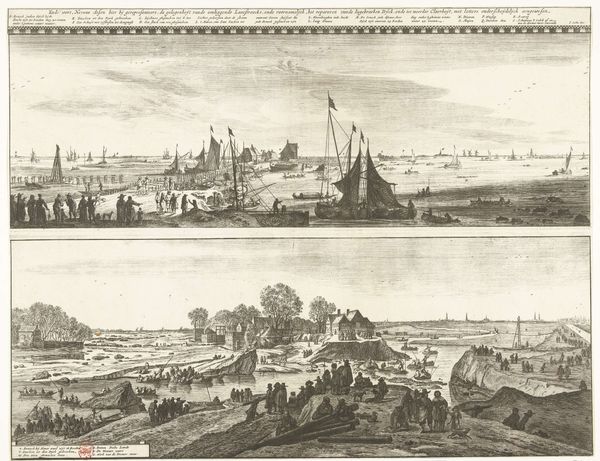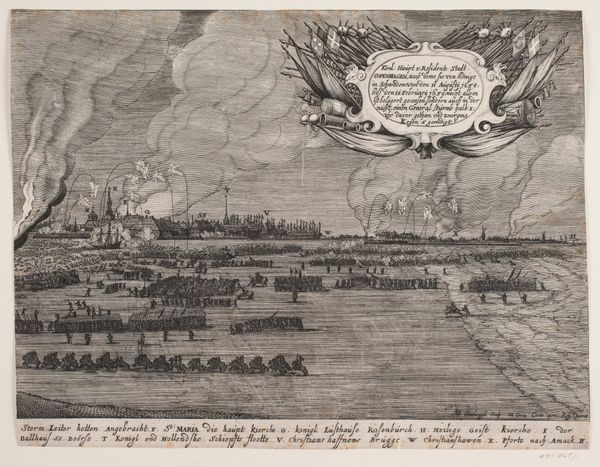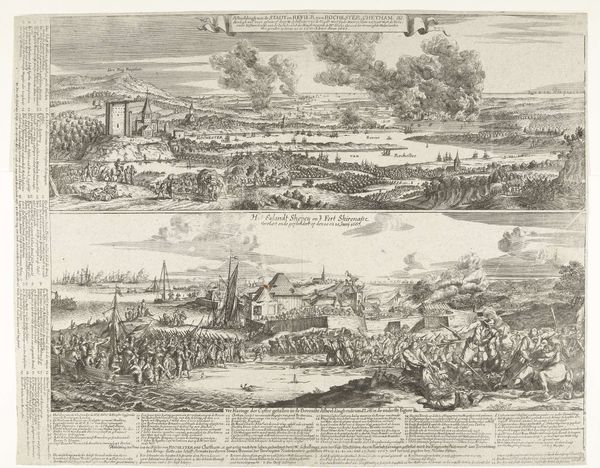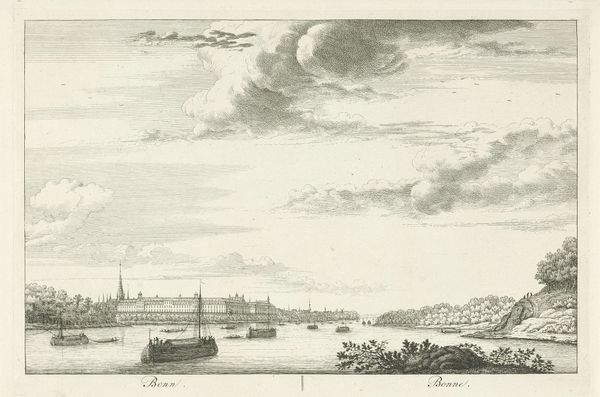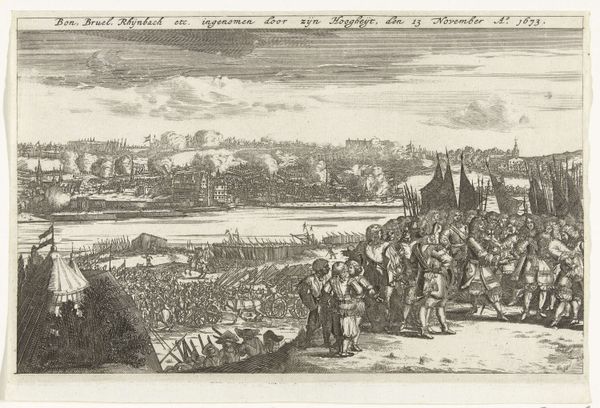
print, engraving
#
dutch-golden-age
# print
#
landscape
#
cityscape
#
history-painting
#
engraving
Dimensions: height 400 mm, width 562 mm
Copyright: Rijks Museum: Open Domain
Curator: Let’s delve into Salomon Savery's print, "De Rijp before and during the Great Fire of 1654," created sometime between 1657 and 1678, and housed at the Rijksmuseum. It’s an engraving depicting a Dutch cityscape before and during a catastrophic fire. Editor: It's fascinating to see the contrast, the calm, idyllic scene above and then the chaos and destruction below. What really strikes me is how the same elements, like the windmills, are present in both, highlighting the immense change. What's your perspective on this piece? Curator: Focusing on the material conditions of its production, consider the labor involved in creating this engraving. Savery, as an artist, was also a craftsman participating in a network of production and consumption. Think about the societal demand for these kinds of historical records or dramatic scenes. This wasn't merely art for art’s sake; it served a specific function in documenting and disseminating information about a significant event. Why do you think that function was valuable at the time? Editor: I imagine it was partly about historical record-keeping but also perhaps a form of early "news" dissemination, especially considering the lack of other visual media at the time. And the engraving medium allowed for multiples, and likely more reach? Curator: Exactly! The choice of engraving, a medium that allows for reproduction and wider distribution, points to the intention of reaching a broader audience. Consider also the materials – the paper, the ink, the metal plate used for the engraving. How do these contribute to its meaning and social context? Editor: Well, the affordability and reproducibility mean it could reach a wider range of social classes. It's not a unique painting only the wealthy could see. Curator: Precisely. The print challenges the notion of art as solely for the elite, engaging with a more popular audience. Its materiality and means of production reflect the shifting social and economic landscape of the Dutch Golden Age. It makes me reconsider how art functions as a product tied to broader social and material conditions. Editor: It's fascinating to consider this work not just as a piece of art but as a commodity produced and consumed within a specific historical and material context. Thanks!
Comments
No comments
Be the first to comment and join the conversation on the ultimate creative platform.

